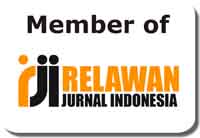Constructing WH-Questions Througn An Error Analysis at Junior High School of Indonesia
Abstract
This research aims at finding out the types of errors committed by the students in making wh questions. The researcher applies descriptive research. It is used to describe the errors of the students. in making wh-questions. The population of this research is the second year students of SMP Negeri 2 Bua Ponrang. The total number of population in this research is 240 students. The researcher uses purposive sampling technique in determining class VIII A. Therefore, the total number of sample in this research is 28 students. Based on the result of data analysis, the researcher concludes the types of error that the second year students at SMP Negeri 2 Bua Ponrang committed in making wh-questions are omission, simple addition, archi-form, alternating form, misordering, and miselection. The omission is dominant errors that the students made because from 1017 of total errors, 475 or 46.7% of the total errors are omission. Then, it followed by archi-form with the total errors is 275 or 28%, 155 errors of simple addition or 15.2%, 93 errors of misordering or 9.1%, 11 errors of alternating form or 1.1%, and the least types of errors is miselection with 8 errors or 0.8%.
Keywords
Full Text:
PDFReferences
Aboud, H. H. (2009). Error Analysis of the University Level Students in the Use of Concord. College of Education/Sammarra. 13/5: 277-283.
Azar, B. S. (2008). Fundamentals of English Grammar. Pearson Education, New York.
Aziz, S. S. (2011). Analysis of Errors in Paragraph Writing in English by Second Year Geography & History Students at University of Baghdad. Journal of College Of Education for Women. 22/2: 371-387.
Brown, D. (2007). Principles of Language Learning and Teaching. Pearson, New York.
Bull, V. (2011). Fourth Edition. Oxford University Press, New York.
Casey, E. V. (2008). An Introduction to the Grammar of English. John Benjamins Publishing Company, Amsterdam.
Cotton, K. (2009). Classroom Questioning. North West Regional Educational Laboratory, Portland.
Cowan, R. (2008). The Teacher’s Grammar of English: a Course Book and Reference Guide. Cambridge University Press, New York.
Dulay, H., Burt, M., and Krashen, S. (2010). Language Two. Oxford University Press, London.
Eastwood, J. (2007). Oxford Guide to English Grammar. Oxford University Press, London.
Ellis, R., and Barkhuzein, G. (2005). Analyzing Learner Language. Oxford University Press, London.
Erdogan, V. (2005). Contribution of Error Analysis to Foreign Language Teaching. Mersin University Journal of Faculty of Education. 1/2: 267-290.
Friedmann, N. (2010). Question Production in Agrammatism: the Tree Pruning Hypothesis. School of Education, Tel Aviv University, Tel Aviv 69978, Israel.
Gay, L. R. (2006). Educational Research Competence for Analysis and Application. Second Edition. Charles E. Pearson Meeril Publishing Company, USA.
Greenbaum, S. (2006). The Oxford English Grammar. Oxford University Press, London.
Gunawan, F. (2015) تحليل الأخطاء النحوية فى ترجمة كتاب نصائح العباد (الدراسة فى نقد الترجمة). Langkawi: Journal of The Association for Arabic and English, 1(1), 71-84.
Gunning, T. G. (2010). Creating Literacy Instruction for All Children. Allyn and Bacon, Needham Height.
Harmer, J. (2007). The Practice of English Language Teaching. Longman, England.
Irfaniah, H. (2014). An Error Analysis in Making WH-Questions (A Case Study of the Second Year Students of SMP Islam Al-Syukro Universal. Unpublished Thesis. Jakarta: Faculty of Tarbiyah and Teachers Training. Syarif Hidayatullah State Islamic University.
James, C. (2010). Errors in Language Learning and Use: Exploring Error Analysis. Longman, London.
Kipfer, B. A. (Ed). (2009). Webster’s College Dictionary. Random House, New York.
Kusumadewi, Hermariyanti (2017) Analysis of Students’ Error in Constructing Nominal Clause. Wanastra Vol IX No. 2 September
Lester, M. (2008). ESL Grammar. McGraw-Hill, New York.
LeTourneau, M. S. (2010). English Grammar. Harcourt College Publishers, Orlando.
Masruddin. (2010). Error Analysis: A Teaching Book and Exercise. Palopo: LPS Press STAIN Palopo
Mendikoetxea, A. (2010). Focus on Errors: Learner Corpora as Pedagogical Tools. Continuum, London.
Richards, J. C. (2005). Dictionary of Language Teaching and Applied Linguistics. Longman, Essex.
Sari, M. P. (2013). An Analysis of Students’ Errors in Constructing Wh-Questions Made by the Eighth Grade of SMPN 1 Gunung Jati. Unpublished Thesis. Cirebon: Faculty of Teaching and Education a Science. University of Swadaya Gunung Jati.
Strazny, P. (2005). Encyclopedia of Linguistics. Vol. 2. Fitzory Dearborn, New York.
Zawahreh, F. (2012). Applied Error Analysis of Written Production of English Essays of Tenth Grade Students in Ajloun Schools, Jordan. International Journal of Learning and Development. 2/2: 287-297.
DOI: http://dx.doi.org/10.31332/lkw.v4i2.852
Copyright (c) 2018 Masruddin Masruddin, Karmila Karmila

This work is licensed under a Creative Commons Attribution-ShareAlike 4.0 International License.
Langkawi: Journal of The Association for Arabic and English indexed by:


















.png)
.png)

.png)
2.png)








